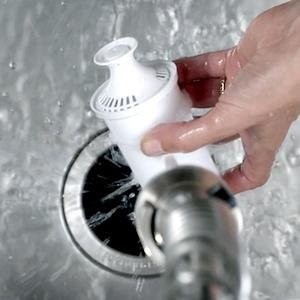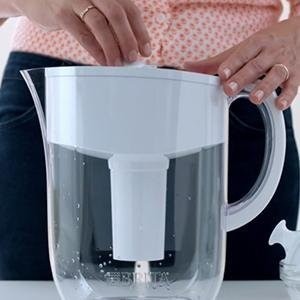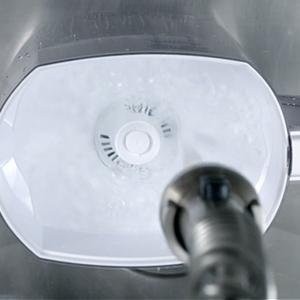How to Change a Brita Filter?
How to Change Your Brita Filter in 4 Easy-to-Do Steps. It takes your tap water and converts it into Brita Filtered Water. The article below will attempt to help you change the Brita water filter.
Your water filter pitcher can be ready to use in a few steps. Wash your hands before touching the filter, then follow the steps below.
Step 1:
Flush the Brita filter with cold water for 15 seconds.

Step 2:
Insert the Brita water filter into the reservoir, line up the notch in the Brita pitcher with the groove in the filter, and press firmly.

Step 3:
Press firmly on the Brita water filter to ensure a tight seal.

Step 4:
After changing the filter, fill the reservoir with cold tap water. It is normal for carbon dust to appear in your first three pitchers. Discard the first three pitchers by watering your plants. Do not waste water!

For best results, store the Brita Pitcher Mug/Jug in your refrigerator or away from direct sunlight.
Commonly asked questions:
1. How often should I change or replace the Brita filter? How long does a Brita filter last?
You should replace the Brita water filter every 40 gallons (151 liters) or every 2 months. This is the recommended replacement time frame
2. What is inside a Brita filter?
Brita filters use a combination of filtration materials to improve the taste and quality of tap water. The main components inside a Brita filter are
- Activated Carbon: This is the primary filtering medium. Activated carbon is highly porous and adsorbs (traps) contaminants such as chlorine, some volatile organic compounds (VOCs), and certain pesticides, which can affect the taste and odor of water.
- Ion Exchange Resin: This material exchanges specific ions in the water, such as calcium and magnesium (which cause hardness), for sodium or hydrogen ions, helping to soften the water and reduce metals like copper, zinc, and cadmium.
- Nonwoven Filter Material: This layer helps to reduce sediment and larger particles from the water.
- Silver or Silver Oxide (in some models): Used to inhibit bacterial growth within the filter itself, though it does not sterilize the water
3. What Do Brita Filters Remove?
The effectiveness of a Brita filter depends on the specific model:
|
Filter Type |
Removes/Reduces |
Does NOT Remove/Reduce |
|
Standard Filter |
Chlorine (taste/odor), copper, zinc, cadmium, some particulates |
Lead, microplastics, PFAS, bacteria, fluoride, nitrates, most pharmaceutical |
|
Elite Filter |
Lead, mercury, cadmium, PFOA/PFOS (PFAS), chlorine, some pesticides, microplastics, some pharmaceuticals, particulates |
Bacteria, fluoride, nitrates, some industrial chemicals |
Both filters improve taste and odor by reducing chlorine and particulates; however, the Elite Filter is certified to remove more contaminants, including lead, mercury, certain pesticides, and microplastics.
4. How Do Brita Filters Work?
- Physical Filtration: The nonwoven material catches larger particles and sediment.
- Adsorption: Activated carbon adsorbs organic compounds, chlorine, and some chemicals.
- Ion Exchange: The resin exchanges ions to reduce metals and soften water
Click here to view and price the Replacement Water Brita Filter.
Click here to view and price the Brita Water Filter Pitcher Mug Jug.
Conclusion
As can be seen, it is very simple to change or replace your Brita filter in just 4 easy steps. Start drinking healthier, great-tasting Brita Filter water today.

